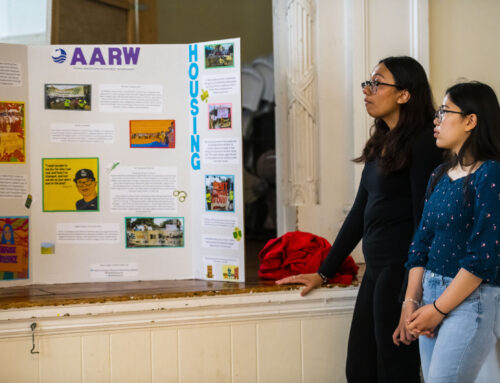I’m not sure what I can rely on anymore. The people around me, the empty spaces I inhabit, and the infrequent conversations I engage in have changed as rapidly as seasons do. Days vary in extreme ways — no structure or rhyme guiding the hours as they float by. My parents are now at home instead of work, my classrooms recreate themselves on digital screens, and my routine doctor’s appointments are postponed to uncertain future dates. In the midst of such changes, I search for stagnation and normalcy. My alarm clock — which never fails to ring at 7:30 A.M.– and the statue of the tall man near Central Park are calming. I trust that they will always be there, unmoving and an emblem of certainty. I hold onto these unchanging symbols of daily existence tightly as if they were my own.
During a time of a global pandemic and vast modification, any mirage of normalcy and permanence is cherished. The fear of loss of what we know and are comfortable with is threatening; so, many individuals find themselves gripping onto — quite literally — what is fixed: statues.
The removal of confederate monuments, such as those of Jefferson Davis and Robert E. Lee, following the murder of George Floyd, is causing discomfort for some. However, honoring Confederate soldiers through statues projects a warped narrative of our nation’s history with Black Americans and perpetuates the illusion that century-long traditions of inequality are allowed to persist. The numerous statues along Virginia’s Monument Avenue, like many in regions across America, were built years after the American Civil War. White southerners had lost their ability to own slaves, but they had yet to accept their changing status. In response, many southerners elected to create lifelong fixtures and statues to ensure that their ideology would continue living — regardless of war or law. Thus, for many individuals, the anger over the destruction and loss of these confederate monuments, which stand tall in both their hometowns and minds, reveals a desperation to preserve their comfort in a racist society and an unwillingness to reconcile past mistreatment of others.
Every morning, I pass a statue of J. Marion Sims, considered to be the father of modern gynecology. I make no pause, take little notice, but still acknowledge its presence and the revolutionary medical findings of Dr. Sims. A couple of months ago, I learned that Dr. Sims performed his scientific experiments on enslaved women without their permission. What is a statue but a perpetuation of one, blinding story? Continuous exposure to the statue will not correct Dr. Sim’s story or any of his wrongdoings. His statue in Central Park was removed a few weeks ago — 124 years after it was erected with great fanfare across from the New York Academy of Medicine.
The tearing down of these statues, the removal of what was once certain, feels empowering. We are witnessing a great awakening of the country to confront decades of normalcy and recontextualize history. One of the major responses to the destruction of confederate monuments has been a fear of erasing our nation’s past — of neglecting and disrespecting those who fought for the Confederacy. To this concern, I would say that Confederate figures will continue to live on — in cemeteries, students’ history textbooks, and films. But who we choose to celebrate and memorialize in our statues must not be conflated with the learning of history. Citizens will still know who Jefferson Davis was. Who Robert E. Lee was. Instead of honoring them through statues, we must recognize their disdainful legacies in our history and carefully choose who to honor in their places. If we leave such monuments — statues which preach segregation — we allow our country to continue being decorated by white shame and Black oppression. Toppling Confederate monuments is not akin to erasing our past, but rather writing our present to inform future generations that action was and is being taken to dismantle white supremacy. This is not about tampering with America’s history. This about confronting how we have manipulated our history. The present will one day morph into history, so we must craft a history that encompasses a more honest and complete retelling.
Symbols are inherently powerful. They’re emblematic of celebration and prosperity — of relentless trial and fearlessness. We use them in the stories we share with our families, viewing them as sacred representations of societal progression. We choose our symbols carefully — with purpose and intention. Like other monuments, Confederate statues stand tall in cities across the United States. These symbols don’t represent American progression, pride, or celebration. They stand as manifestations of an all-white society and a white-washing of our nation. Preserving them is like trying to rekindle a misty nostalgia that must be reconsidered to address the continuation of racism.




